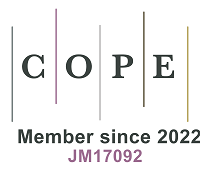REFERENCES
1. Melymuk L, Diamond ML, Riddell N, Wan Y, Vojta Š, Chittim B. Challenges in the analysis of novel flame retardants in indoor dust: results of the INTERFLAB 2 interlaboratory evaluation. Environ Sci Technol 2018;52:9295-303.
2. Rostkowski P, Haglund P, Aalizadeh R, et al. The strength in numbers: comprehensive characterization of house dust using complementary mass spectrometric techniques. Anal Bioanal Chem 2019;411:1957-77.
3. Jílková S, Melymuk L, Vojta Š, Vykoukalová M, Bohlin-Nizzetto P, Klánová J. Small-scale spatial variability of flame retardants in indoor dust and implications for dust sampling. Chemosphere 2018;206:132-41.
4. Al-Omran LS, Harrad S. Influence of sampling approach on concentrations of legacy and “novel” brominated flame retardants in indoor dust. Chemosphere 2017;178:51-8.
5. Harrad S, Abdallah MA, Covaci A. Causes of variability in concentrations and diastereomer patterns of hexabromocyclododecanes in indoor dust. Environ Int 2009;35:573-9.
6. Allgood JM, Jimah T, McClaskey CM, et al. Potential human exposure to halogenated flame-retardants in elevated surface dust and floor dust in an academic environment. Environ Res 2017;153:55-62.
7. Björklund JA, Sellström U, de Wit CA, Aune M, Lignell S, Darnerud PO. Comparisons of polybrominated diphenyl ether and hexabromocyclododecane concentrations in dust collected with two sampling methods and matched breast milk samples. Indoor Air 2012;22:279-88.
8. Wilson R, Jones-otazo H, Petrovic S, et al. Revisiting dust and soil ingestion rates based on hand-to-mouth transfer. Hum Ecol Risk Asse 2012;19:158-88.
9. Cao ZG, Yu G, Chen YS, et al. Particle size: a missing factor in risk assessment of human exposure to toxic chemicals in settled indoor dust. Environ Int 2012;49:24-30.
10. Calabrese EJ, Stanek EJ, Barnes R, et al. Methodology to estimate the amount and particle size of soil ingested by children: implications for exposure assessment at waste sites. Regul Toxicol Pharmacol 1996;24:264-8.
11. Hee SS, Peace B, Clark C, Boyle JR, Bornschein RL, Hammond PB. Evolution of efficient methods to sample lead sources, such as house dust and hand dust, in the homes of children. Environmental Research 1985;38:77-95.
12. Driver JH, Konz JJ, Whitmyre GK. Soil adherence to human skin. Bull Environ Contam Toxicol 1989;43:814-20.
13. Edwards RD, Lioy PJ. The EL sampler: a press sampler for the quantitative estimation of dermal exposure to pesticides in housedust. J Expo Anal Environ Epidemiol 1999;9:521-9.
14. Cao Z, Yu G, Chen Y, et al. Mechanisms influencing the BFR distribution patterns in office dust and implications for estimating human exposure. J Hazard Mater 2013;252-253:11-8.
15. Latif MT, Yong SM, Saad A, et al. Composition of heavy metals in indoor dust and their possible exposure: a case study of preschool children in Malaysia. Air Qual Atmos Health 2014;7:181-93.
16. Rasmussen PE, Beauchemin S, Chénier M, et al. Canadian house dust study: lead bioaccessibility and speciation. Environ Sci Technol 2011;45:4959-65.
17. Rasmussen PE, Levesque C, Chénier M, Gardner HD, Jones-Otazo H, Petrovic S. Canadian house dust study: population-based concentrations, loads and loading rates of arsenic, cadmium, chromium, copper, nickel, lead, and zinc inside urban homes. Sci Total Environ 2013;443:520-9.
18. He CT, Zheng XB, Yan X, et al. Organic contaminants and heavy metals in indoor dust from e-waste recycling, rural, and urban areas in South China: Spatial characteristics and implications for human exposure. Ecotoxicol Environ Saf 2017;140:109-15.
19. Xu F, Liu Y, Wang J, et al. Characterization of heavy metals and brominated flame retardants in the indoor and outdoor dust of e-waste workshops: implication for on-site human exposure. Environ Sci Pollut Res Int 2015;22:5469-80.
20. Yang Q, Chen H, Li B. Source identification and health risk assessment of metals in indoor dust in the vicinity of phosphorus mining, Guizhou Province, China. Arch Environ Contam Toxicol 2015;68:20-30.
21. Hoffman K, Garantziotis S, Birnbaum LS, Stapleton HM. Monitoring indoor exposure to organophosphate flame retardants: hand wipes and house dust. Environ Health Perspect 2015;123:160-5.
22. Bennett DH, Moran RE, Wu XM, et al. Polybrominated diphenyl ether (PBDE) concentrations and resulting exposure in homes in California: relationships among passive air, surface wipe and dust concentrations, and temporal variability. Indoor Air 2015;25:220-9.
23. Hassan Y, Shoeib T. Levels of polybrominated diphenyl ethers and novel flame retardants in microenvironment dust from Egypt: an assessment of human exposure. Sci Total Environ 2015;505:47-55.
24. Chow K, Hearn LK, Zuber M, Beatty JA, Mueller JF, Barrs VR. Evaluation of polybrominated diphenyl ethers (PBDEs) in matched cat sera and house dust samples: investigation of a potential link between PBDEs and spontaneous feline hyperthyroidism. Environ Res 2015;136:173-9.
25. Venier M, Audy O, Vojta Š, et al. Brominated flame retardants in the indoor environment - Comparative study of indoor contamination from three countries. Environ Int 2016;94:150-60.
26. Stubbings WA, Nguyen LV, Romanak K, et al. Flame retardants and plasticizers in a Canadian waste electrical and electronic equipment (WEEE) dismantling facility. Sci Total Environ 2019;675:594-603.
27. Fromme H, Lahrz T, Kraft M, et al. Organophosphate flame retardants and plasticizers in the air and dust in German daycare centers and human biomonitoring in visiting children (LUPE 3). Environ Int 2014;71:158-63.
28. Ait Bamai Y, Shibata E, Saito I, et al. Exposure to house dust phthalates in relation to asthma and allergies in both children and adults. Sci Total Environ 2014;485-486:153-63.
29. Rauert C, Harrad S, Suzuki G, Takigami H, Uchida N, Takata K. Test chamber and forensic microscopy investigation of the transfer of brominated flame retardants into indoor dust via abrasion of source materials. Sci Total Environ 2014;493:639-48.
30. Rauert C, Harrad S. Mass transfer of PBDEs from plastic TV casing to indoor dust via three migration pathways-A test chamber investigation. Sci Total Environ 2015;536:568-74.
31. Webster TF, Harrad S, Millette JR, et al. Identifying transfer mechanisms and sources of decabromodiphenyl ether (BDE 209) in indoor environments using environmental forensic microscopy. Environ Sci Technol 2009;43:3067-72.
32. Zhou L, Püttmann W. Distributions of organophosphate flame retardants (OPFRs) in three dust size fractions from homes and building material markets. Environ Pollut 2019;245:343-52.
33. Guo H, Zheng X, Ru S, Sun R, Mai B. Size-dependent concentrations and bioaccessibility of organophosphate esters (OPEs) in indoor dust: A comparative study from a megacity and an e-waste recycling site. Sci Total Environ 2019;650:1954-60.
34. Cao Z, Xu F, Li W, et al. Seasonal and particle size-dependent variations of hexabromocyclododecanes in settled dust: implications for sampling. Environ Sci Technol 2015;49:11151-7.
35. Al-Omran LS, Harrad S. Distribution pattern of legacy and “novel” brominated flame retardants in different particle size fractions of indoor dust in Birmingham, United Kingdom. Chemosphere 2016;157:124-31.
36. Cao Z, Xu F, Covaci A, et al. Distribution patterns of brominated, chlorinated, and phosphorus flame retardants with particle size in indoor and outdoor dust and implications for human exposure. Environ Sci Technol 2014;48:8839-46.
37. Caban M, Stepnowski P. Determination of bisphenol A in size fractions of indoor dust from several microenvironments. Microchem J 2020;153:104392.
38. Liu R, He R, Cui X, Ma LQ. Impact of particle size on distribution, bioaccessibility, and cytotoxicity of polycyclic aromatic hydrocarbons in indoor dust. J Hazard Mater 2018;357:341-7.
39. Cao Z, Wang M, Chen Q, et al. Spatial, seasonal and particle size dependent variations of PAH contamination in indoor dust and the corresponding human health risk. Sci Total Environ 2019;653:423-30.
40. Lanzerstorfer C. Variations in the composition of house dust by particle size. J Environ Sci Health A Tox Hazard Subst Environ Eng 2017;52:770-7.
41. Rasmussen PE, Beauchemin S, Nugent M, Dugandzic R, Lanouette M, Chénier M. Influence of matrix composition on the bioaccessibility of Copper, Zinc, and Nickel in urban residential dust and soil. Hum Ecol Risk Assess 2008;14:351-71.
42. Richman KE, Butt CM, Young CJ. Size-resolved particle measurements of polybrominated diphenyl ethers indoors: implications for sources and human exposure. Environ Toxicol Chem 2018;37:481-90.
43. Wei H, Turyk M, Cali S, Dorevitch S, Erdal S, Li A. Particle size fractionation and human exposure of polybrominated diphenyl ethers in indoor dust from Chicago. J Environ Sci Health A Tox Hazard Subst Environ Eng 2009;44:1353-61.
44. Wang W, Wu FY, Huang MJ, Kang Y, Cheung KC, Wong MH. Size fraction effect on phthalate esters accumulation, bioaccessibility and in vitro cytotoxicity of indoor/outdoor dust, and risk assessment of human exposure. J Hazard Mater 2013;261:753-62.
45. Lewis RG, Fortune CR, Willis RD, Camann DE, Antley JT. Distribution of pesticides and polycyclic aromatic hydrocarbons in house dust as a function of particle size. Environ Health Perspect 1999;107:721-6.
46. Wang W, Huang MJ, Zheng JS, Cheung KC, Wong MH. Exposure assessment and distribution of polychlorinated biphenyls (PCBs) contained in indoor and outdoor dusts and the impacts of particle size and bioaccessibility. Sci Total Environ 2013;463-464:1201-9.
47. Zhang Q, Zhao Y, Du F, Cai H, Wang G, Shi H. Microplastic fallout in different indoor environments. Environ Sci Technol 2020;54:6530-9.
48. Wang M, Jia S, Lee SH, Chow A, Fang M. Polycyclic aromatic hydrocarbons (PAHs) in indoor environments are still imposing carcinogenic risk. J Hazard Mater 2021;409:124531.
49. Kang Y, Shao D, Li N, et al. Cancer risk assessment of human exposure to polycyclic aromatic hydrocarbons (PAHs) via indoor and outdoor dust based on probit model. Environ Sci Pollut Res Int 2015;22:3451-6.
50. Oliveira M, Slezakova K, Delerue-Matos C, Pereira Mdo C, Morais S. Assessment of polycyclic aromatic hydrocarbons in indoor and outdoor air of preschool environments (3-5 years old children). Environ Pollut 2016;208:382-94.
51. Demirtepe H, Melymuk L, Codling G, et al. Targeted and suspect screening of plasticizers in house dust to assess cumulative human exposure risk. Sci Total Environ 2021;781:146667.
52. Ma Y, Harrad S. Spatiotemporal analysis and human exposure assessment on polycyclic aromatic hydrocarbons in indoor air, settled house dust, and diet: A review. Environ Int 2015;84:7-16.
53. Salthammer T, Schripp T. Application of the Junge- and Pankow-equation for estimating indoor gas/particle distribution and exposure to SVOCs. Atmospheric Environment 2015;106:467-76.
54. Chrysikou LP, Gemenetzis PG, Samara CA. Wintertime size distribution of polycyclic aromatic hydrocarbons (PAHs), polychlorinated biphenyls (PCBs) and organochlorine pesticides (OCPs) in the urban environment: Street- vs rooftop-level measurements. Atmospheric Environ 2009;43:290-300.
55. Degrendele C, Okonski K, Melymuk L, et al. Size specific distribution of the atmospheric particulate PCDD/Fs, dl-PCBs and PAHs on a seasonal scale: Implications for cancer risks from inhalation. Atmospheric Environ 2014;98:410-6.
56. Lammel G, Klánová J, Ilić P, et al. Polycyclic aromatic hydrocarbons in air on small spatial and temporal scales - I. Levels and variabilities. Atmospheric Environ 2010;44:5015-21.
57. Hunt A, Johnson DL. Suspension and resuspension of dry soil indoors following track-in on footwear. Environ Geochem Health 2012;34:355-63.
58. Morawska L, Salthammer T. Sampling of surface dust in buildings. Indoor environment: airborne particles and settled dust. Indoor environment: airborne particles and settled dust ;2003:82-104.
59. Rasmussen P, Subramanian K, Jessiman B. A multi-element profile of house dust in relation to exterior dust and soils in the city of Ottawa, Canada. Sci Total Environ 2001;267:125-40.
60. Jones RJA, Hiederer R, Rusco E, Loveland PJ, Montanarella L. Estimating organic carbon in the soils of Europe for policy support. Eur J Soil Sci 2005;56:655-71.
61. Demirtepe H, Melymuk L, Diamond ML, et al. Linking past uses of legacy SVOCs with today’s indoor levels and human exposure. Environ Int 2019;127:653-63.
62. Marcinekova P, Jílková SR, Melymuk L, Mikeš O, Klánová J. Air pollution in schools and kindergartens is dominated by indoor sources. prep.
63. Deziel NC, Rull RP, Colt JS, et al. Polycyclic aromatic hydrocarbons in residential dust and risk of childhood acute lymphoblastic leukemia. Environ Res 2014;133:388-95.
64. Al-Harbi M, Alhajri I, Whalen JK. Health risks associated with the polycyclic aromatic hydrocarbons in indoor dust collected from houses in Kuwait. Environ Pollut 2020;266:115054.
65. Gevao B, Al-Bahloul M, Zafar J, Al-Matrouk K, Helaleh M. Polycyclic aromatic hydrocarbons in indoor air and dust in Kuwait: implications for sources and nondietary human exposure. Arch Environ Contam Toxicol 2007;53:503-12.
66. Lim H, Sadiktsis I, de Oliveira Galvão MF, Westerholm R, Dreij K. Polycyclic aromatic compounds in particulate matter and indoor dust at preschools in Stockholm, Sweden: Occurrence, sources and genotoxic potential in vitro. Sci Total Environ 2021;755:142709.
67. Aquilina NJ, Havel CM, Benowitz NL, Jacob P 3rd. Tobacco-specific and combustion pollutants in settled house dust in Malta. J Environ Expo Assess 2022;1:7.
68. Wang B, Pang S, Zhang X, et al. Levels and neurodevelopmental effects of polycyclic aromatic hydrocarbons in settled house dust of urban dwellings on preschool-aged children in Nanjing, China. Atmospheric Pollu Res 2014;5:292-302.
69. Qi H, Li WL, Zhu NZ, et al. Concentrations and sources of polycyclic aromatic hydrocarbons in indoor dust in China. Sci Total Environ 2014;491-492:100-7.
70. Peng H, Yang Y, Liu M, Zhou JL. PAHs in indoor dust samples in Shanghai’s universities: levels, sources and human exposure. Environ Geochem Health 2012;34:587-96.
71. Wang XQ, Li X, Yang YY, et al. Source, Characterization of Indoor Dust PAHs and the Health Risk on Chinese Children. Curr Med Sci 2021;41:199-210.
72. Čupr P, Flegrová Z, Franců J, Landlová L, Klánová J. Mineralogical, chemical and toxicological characterization of urban air particles. Environ Int 2013;54:26-34.
73. Chrysikou LP, Samara CA. Seasonal variation of the size distribution of urban particulate matter and associated organic pollutants in the ambient air. Atmospheric Environ 2009;43:4557-69.
74. Lammel G, Klánová J, Ilić P, et al. Polycyclic aromatic hydrocarbons in air on small spatial and temporal scales - II. Mass size distributions and gas-particle partitioning. Atmospheric Environ 2010;44:5022-7.
75. Zhang J, Li R, Zhang X, Bai Y, Cao P, Hua P. Vehicular contribution of PAHs in size dependent road dust: A source apportionment by PCA-MLR, PMF, and Unmix receptor models. Sci Total Environ 2019;649:1314-22.
76. Zhang J, Wang J, Hua P, Krebs P. The qualitative and quantitative source apportionments of polycyclic aromatic hydrocarbons in size dependent road deposited sediment. Sci Total Environ 2015;505:90-101.
77. Lorenzi D, Entwistle JA, Cave M, Dean JR. Determination of polycyclic aromatic hydrocarbons in urban street dust: implications for human health. Chemosphere 2011;83:970-7.
78. Müller S, Wilcke W, Kanchanakool N, Zech W. Polycyclic aromatic hydrocarbons (PAHs) and polychlorinated biphenyls (PCBs) in particle-size separates of urban soils in Bangkok, Thailand. Soil Sci 2000;165:412-9.
79. Yang Y, Ligouis B, Pies C, Grathwohl P, Hofmann T. Occurrence of coal and coal-derived particle-bound polycyclic aromatic hydrocarbons (PAHs) in a river floodplain soil. Environ Pollut 2008;151:121-9.
80. Lanzerstorfer C, Logiewa A. The upper size limit of the dust samples in road dust heavy metal studies: Benefits of a combined sieving and air classification sample preparation procedure. Environ Pollut 2019;245:1079-85.







